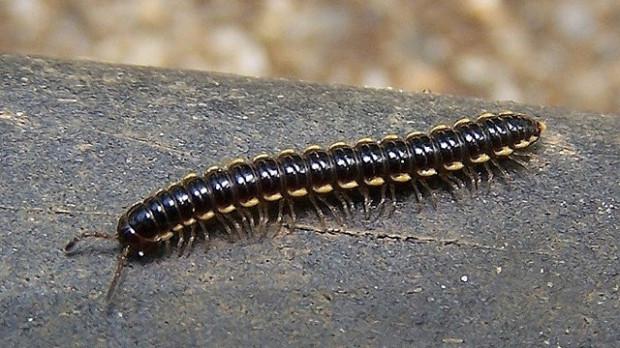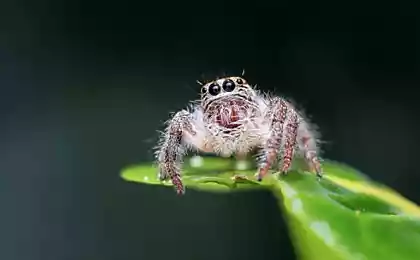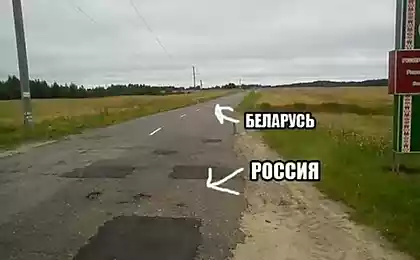645
In Tasmania, there is an invisible boundary that never cross insects, and no one knows why
Mysterious mnogonozhki
One of the most strictly controlled borders in the world is a band of forests length of nearly 200 km north-west of Tasmania. In some places the width of the timber is barely 100 meters, but the people on the one hand very rarely try to cross the border and go to the other side.
This boundary is not a geographical barrier or wall, it does not share the country or ethnic groups. Rather, it is an invisible line, which sometimes occur, but never mixed the two closely related species of centipedes, and no one knows why.

On the western side of the border live yellow-brown millipede species Tasmaniosoma compitale 15 mm in length and live on the eastern red-brown centipedes Tasmaniosoma hickmanorum. Both species have been classified and described in 2010 by Bob Mesibovym, centipedes and specialist researcher in the Tasmanian Museum Queen Victoria.
In biogeographers - scientists who study the spatial distribution of species - there is a special name for cases where species live close by, but almost no cross - border parapatricheskie. This often occurs in centipedes, other invertebrates, certain species of plants and several species of birds. Typically, the borders arise due to natural environmental conditions, for example, two zones can be separate stream.
In Tasmania, nothing like this: forest belt rises above sea level on the northern coast of Tasmania to 700 meters, and then gradually decreases again to sea level. The invisible boundary crosses the river and extends through several climatic zones, and almost all its extent one species of centipedes are not transferred to the territory of another species.
Mesibovu, however, managed to find a place where the two species coexist. The area of the "island" - about 40 square kilometers. Scientists suggest that Tasmaniosoma hickmanorum hit the territory Tasmaniosoma Compitale due to human intervention: for example, were brought here accidentally drove through the road trucks with cattle.
Currently, scientists can only assume that the border is the result of some sort of agreement between the two biological species, but its origin remains a mystery.
via factroom.ru

One of the most strictly controlled borders in the world is a band of forests length of nearly 200 km north-west of Tasmania. In some places the width of the timber is barely 100 meters, but the people on the one hand very rarely try to cross the border and go to the other side.
This boundary is not a geographical barrier or wall, it does not share the country or ethnic groups. Rather, it is an invisible line, which sometimes occur, but never mixed the two closely related species of centipedes, and no one knows why.

On the western side of the border live yellow-brown millipede species Tasmaniosoma compitale 15 mm in length and live on the eastern red-brown centipedes Tasmaniosoma hickmanorum. Both species have been classified and described in 2010 by Bob Mesibovym, centipedes and specialist researcher in the Tasmanian Museum Queen Victoria.
In biogeographers - scientists who study the spatial distribution of species - there is a special name for cases where species live close by, but almost no cross - border parapatricheskie. This often occurs in centipedes, other invertebrates, certain species of plants and several species of birds. Typically, the borders arise due to natural environmental conditions, for example, two zones can be separate stream.
In Tasmania, nothing like this: forest belt rises above sea level on the northern coast of Tasmania to 700 meters, and then gradually decreases again to sea level. The invisible boundary crosses the river and extends through several climatic zones, and almost all its extent one species of centipedes are not transferred to the territory of another species.
Mesibovu, however, managed to find a place where the two species coexist. The area of the "island" - about 40 square kilometers. Scientists suggest that Tasmaniosoma hickmanorum hit the territory Tasmaniosoma Compitale due to human intervention: for example, were brought here accidentally drove through the road trucks with cattle.
Currently, scientists can only assume that the border is the result of some sort of agreement between the two biological species, but its origin remains a mystery.
via factroom.ru
Swiss watchmaker 240 years ago, I made a robot that could write
Intuition is much better able to predict the fate of your relationship than the mind























